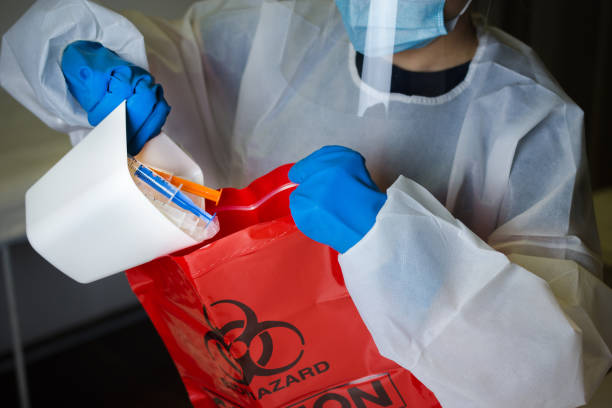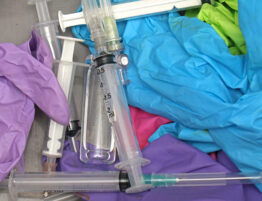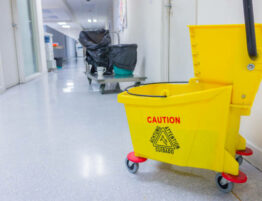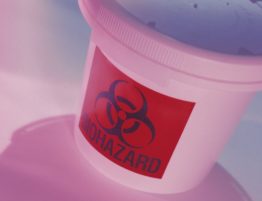
Waste management in healthcare is essential for reducing potential health risks and preserving environmental sustainability. Two phrases frequently used interchangeably but fundamentally differ among the different types of trash produced in healthcare institutions are “medical waste” and “biomedical waste.” Although they both include components that come from healthcare activities, their composition, classification, and possible dangers are different. This page explores the differences between biomedical and medical waste, providing information on their definitions, traits, and disposal practices.
Defining Medical Waste and Biomedical Waste
Medical Waste
Medical waste is a wide range of materials produced during an animal or human diagnosis, treatment, or vaccination. In addition to cultures, stocks, and swabs used in laboratories, it contains disposable medical supplies like bandages, gloves, syringes, and other items. These products might be tainted with blood, body fluids, or other potentially contagious elements.
Medical waste is distinguished by its infectious nature, which makes it potentially hazardous to the environment or public health. This risk requires cautious handling, treatment, and disposal to reduce environmental contamination and stop the spread of diseases.
Biomedical Waste
Waste that biological agents may contaminate is referred to as biomedical waste, which is a subset of medical waste. Not all medical waste falls under the category of biomedical waste, even though all biomedical waste is medical waste.
Wastes not regarded as contagious are not the only ones included in biomedical waste. Sharps (scalpels, needles), anatomical waste (body parts, tissues), pharmaceutical waste (expired prescriptions, chemotherapy drugs), and even trace chemotherapy waste are all included in this category. The primary distinction is that biological agents that could harm human health are present in or have come into contact with biomedical waste.
Like the difference between medical waste and biomedical waste, you may also like to read about the most common medical waste.
Characteristics and Classifications
Medical Waste
This category comprises non-hazardous trash produced in healthcare facilities, such as paper towels, gloves, and general rubbish. Even if some of these materials might be contaminated, they don’t pose serious environmental or public health threats.
Biomedical Waste
Biomedical waste comprises substances that might spread infectious diseases or include dangerous substances. Sharp objects like scalpels and needles, bandages soaked in blood, cultures, specimens harboring contagious pathogens, and chemical agents utilized in medical operations fall under this category.
Key Differences
- Scope
- Non-biological elements like packaging are included in the category of medical waste, which consists of all trash produced in healthcare facilities.
- Waste that has been polluted by or may contain biological agents, such as blood or bodily fluids, is biomedical waste.
- Risk Level
- There may be a chance of contamination or infection with medical waste.
- The environment and public health are more in danger from biological contamination, a natural feature of biomedical waste.
- Examples
- Disposable medical equipment, bandages, and gloves are examples of medical waste.
- Sharps, bodily tissues, and medication waste are examples of biomedical waste.
- Regulatory Considerations
- Proper segregation, packaging, transportation, and treatment are the main topics of legislation that control medical waste disposal and differ depending on the jurisdiction.
- Because biomedical waste has a larger potential for biological dangers, disposal standards are frequently more severe. This could entail using specialist treatment techniques like cremation or autoclaving.
Importance of Proper Management
For several reasons, it is essential to manage medical and biological waste effectively:
- Protection of Public Health
When infectious waste is improperly disposed of, illnesses may spread, endangering the public, waste handlers, and medical personnel.
- Environmental Preservation
Poor disposal techniques can contaminate the environment’s air, water, and soil.
- Legal Compliance
To protect their operations and stay out of trouble with the law, healthcare facilities must abide by waste management rules and guidelines.
- Resource Conservation
The environmental impact of healthcare operations can be decreased, and resources can be preserved by properly sorting and recycling specific waste products.
Conclusion
Despite their frequent interchangeability, medical and biomedical waste are groups with different risk profiles and legal requirements. Biomedical trash is waste that biological agents have tainted, whereas medical waste includes various items produced in healthcare settings. Implementing efficient waste management procedures that protect the environment and public health in healthcare institutions requires understanding these distinctions. Responsibly managing healthcare waste involves following protocols for the processing, treating, and disposing of biomedical and medical waste.








